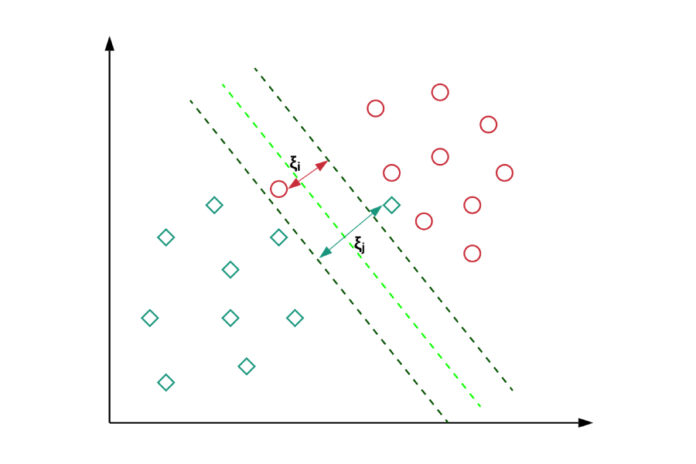Support vector machines (SVMs) are effective yet adaptable supervised machine learning algorithms for regression and classification. However, they are typically employed in classification issues.
SVMs were initially introduced in the 1960s but were later developed in 1990. SVMs are implemented differently from other machine learning algorithms. They have recently gained popularity due to their capacity to manage numerous continuous and categorical variables.
An SVM model represents different classes in a hyperplane in multidimensional space. The hyperplane will be generated iteratively by SVM to minimize the error. SVM aims to divide the datasets into classes to find a maximum marginal hyperplane (MMH).
The followings are important concepts in SVM:
- Support Vectors: Support vectors are the data points closest to the hyperplane. These data points will be used to define the dividing line.
- Hyperplane: It is a decision plane or space that is divided between a collection of objects with various class designations.
- Margin: The distance between two lines on the closet data points of various classes can be used to define margin. The perpendicular distance between the line and the support vectors can be used to calculate it. A large margin is considered good, whereas a small margin is considered bad.
A maximum marginal hyperplane (MMH) can be found by classifying the datasets, which can be accomplished using SVM in the following two steps: SVM will first iteratively generate the best possible set of hyperplanes that segregate the classes, and then it will select the hyperplane that separates the classes correctly.
Advantages of SVM
All classification techniques have benefits and drawbacks, which vary in importance depending on the data being analyzed and are, therefore, relative to one another. In cases of data irregularity, such as when the data are not normally distributed or have an unknown distribution, SVMs can be useful for insolvency analysis. It can be used to assess data, such as financial ratios, which need to be transformed before being scored using traditional classification methods. The key benefits of SVMs include the following.
- SVM classifiers perform well in high-dimensional space and have excellent accuracy. SVM classifiers require less memory because they only use a portion of the training data.
- SVM performs reasonably well when there is a large gap between classes.
- High-dimensional spaces are better suited for SVM.
- When the number of dimensions exceeds the number of samples, SVM is useful.
- SVM uses memory effectively.
Disadvantages of SVM
Lack of results transparency is a common drawback of non-parametric methods like SVMs. Due to the possibility of a very high dimension, SVMs cannot represent the score of all companies as a straightforward parametric function of the financial ratios. It neither has another straightforward, useful form nor is it a linear combination of single financial ratios. The financial ratio weights are not constant. As a result, there is a range in the marginal contribution of each financial ratio to the score. Each company is given a weight based on the difference between the value of its financial ratios and the support vectors of the training data sample using a Gaussian kernel. These are the main drawbacks of SVMs.
- SVM requires a long training period; as a result, it is not practical for large datasets.
- The inability of SVM classifiers to handle overlapping classes is another drawback.
- Large data sets are not a good fit for the SVM algorithm.
- When the data set contains more noise, such as overlapping target classes, SVM does not perform as well.
- The SVM will perform poorly when the number of features for each data point is greater than the number of training data samples.







